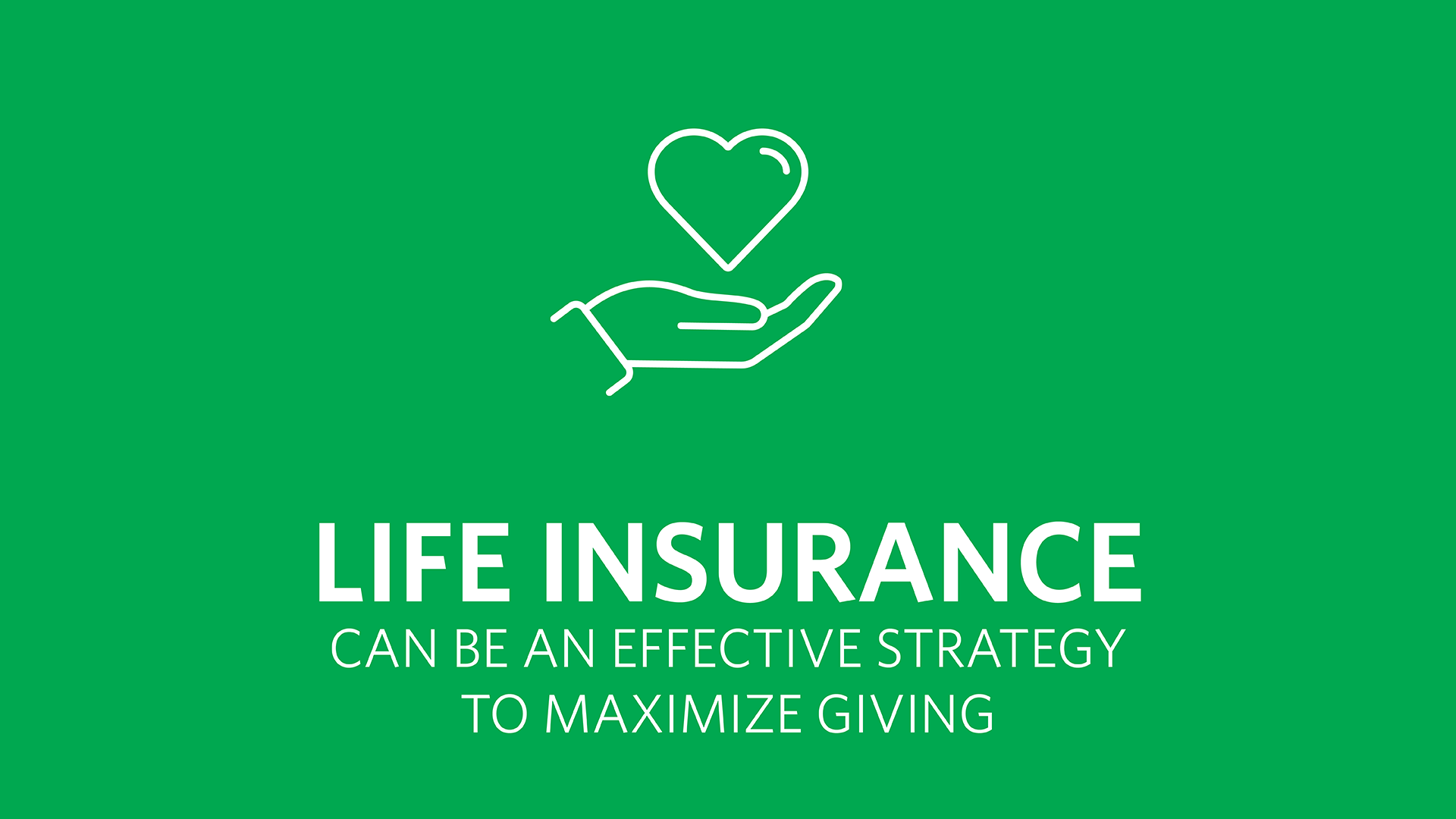Using Life Insurance for Charitable Planning

Life insurance is a powerful financial planning tool. With inherent tax benefits and the ability to accumulate cash value, it can help families build and keep assets for the next generation.
Or, it can help them give it away.
Establishing a documented philanthropic strategy before high-net-worth clients start to make large donations is essential. Let’s explore why life insurance can be such a dynamic tool for creating a plan to build a charitable legacy.
The Basics of Charitable Giving
Your clients could donate cash to a cause they care about. People do that every day.
However, your goal is to use the assets clients already have to create additional value. Various financial vehicles can help create a much larger one-time donation than clients would be able to with a cash gift. Before choosing a path, clients should consider how factors such as tax benefits or administrative overhead affect their plan.
Types of Charities
Not all charities are structured the same. Generally, a charity can be either public or private. Each has different tax benefits, levels of control and legal regulations. In some cases, understanding the differences could impact who your client chooses to donate to.
Tax Limitations
The amount of deduction is usually based on the fair market value (FMV). There are some instances where the amount claimed on taxes may be limited by the cost basis. As a general rule, an individual can only deduct a percentage of their adjusted gross income (AGI) for the year. Make sure your clients consult a tax professional before acting.
Required Documentation
Keeping records of large donations can go well beyond turning in a receipt. For example, giving property over $5,000 will require a written appraisal and information on how the asset was obtained. Generally, the more complex a gift is, the more potential administrative requirements.
Why Use Life Insurance
Life insurance policies can multiply a gifting plan. Life insurance policies have tax-deferred growth and low long-term costs compared to other investments. It could be your client’s most well-rounded asset for increasing philanthropy.
It’s more affordable
The assets in your client’s estate are likely building value, and may not be very liquid. Rather than giving a large amount all at once (potentially taking assets off your books), clients can pay the smaller monthly premiums and still make a substantial donation to charity.
It builds value
Life insurance may support a much larger one-time donation than clients would be able to make using cash from their estate. For example, if your client pays a few thousand dollars per year in premiums for a contract, the eventual payout could potentially be six or seven figures, depending on the circumstances. Life insurance proceeds paid to charities are fully deductible for estate tax purposes.
It may exist already
Did your clients purchase a permanent policy years ago to help their loved ones in case they died? Do their original beneficiaries still need the financial support? If not, a charity does! By donating your policy or naming a charity as your life insurance beneficiary, you can leave a legacy using something you already own.
Three Ways to Use Life Insurance for Charity

Clients have three basic options to have a charitable organization benefit from their life insurance:
- Name charity as beneficiary
- Transfer a policy to charity
- Purchase a new policy
If your clients have an existing policy that they no longer need for estate planning, they can easily name a favorite charity as the beneficiary of their current policy. After they die, the charity will receive the life insurance death benefit tax-free.
Alternatively, the existing policy could be transferred so that the charity owns the policy. If future premiums are due, the original owner can make additional contributions to the charity to cover the expense.
Finally, if your client has regularly donated to the charity in the past, they may be able to purchase a new life insurance policy, with the charity as the owner from the outset. There are some limitations with this strategy that our Advanced Life Insurance Case Design can walk you through.
Bequests vs. Life Insurance
A common approach for charitable legacy planning is to include a bequest in a will. The bequest is a specified value to be paid out of estate assets to a specified beneficiary.
This approach could be described as having a good intention to make a charitable gift, since the estate assets must go through the state’s probate process before being distributed to the charity. Using life insurance can turn the intention into a plan.
With life insurance, the charitable gift is guaranteed to be exactly as intended.
Properly designed, life insurance proceeds will not be reduced by taxes – thus the size of the charitable gift will not be reduced. Life insurance proceeds do not go through probate. Many states also afford life insurance protection from creditors, which may not be the case for the assets the donor intended to bequeath.
Another consideration is the life insurance contract itself, which creates a legal framework for your client’s wishes. Heirs can contest a bequest made by will. Drafting errors and family squabbles can cause the bequest to be reduced or not received at all. Life insurance proceeds are not subject to these issues.
You can read more about the advantages of life insurance vs. bequests here.
Charitable Trusts
If your client wants to designate assets for a favorite charity but is concerned about keeping a benefit for their family, a charitable trust may be the solution. These are often referred to as a split-interest trust, since both the charity and a noncharitable beneficiary will receive assets.
There are two types: a charitable remainder trust or a charitable lead trust.
Charitable Remainder Trust (CRT)
A CRT pays a stream of income to your client or their beneficiary for a specified period, up to 20 years, or for the client’s lifetime. At the end of the trust term, the remainder of the trust will be passed to the charity or charities of your client’s choice.
Charitable Lead Trust (CLT)
These are essentially the opposite of a CRT. In a CLT, the charity receives an income stream for a set duration, after which the remaining value is available to the original donor or their beneficiaries. A popular solution is to use a Charitable Lead Annuity Trust, which will pay a fixed amount over some time.
With any trusts, there are minimum contributions, complexity and costs to set up and maintain, irrevocability and other considerations. While the tax benefits may be worth it for high-net-worth clients, they are sophisticated estate planning tools that will need to be properly structured.
Creating a Plan
By combining charitable giving with life insurance planning, clients may be able to preserve personal wealth while supporting an organization they care about.
The most appropriate solution for your client will depend on several factors including donation timing, asset type and estate planning goals.
If you’re working with high-net-worth clients who want to incorporate a charitable giving strategy inside their estate planning, reach out to our Advanced Estate Planning team. We’ll help you figure out the specifics!
You may also be interested in specific strategies for:




















